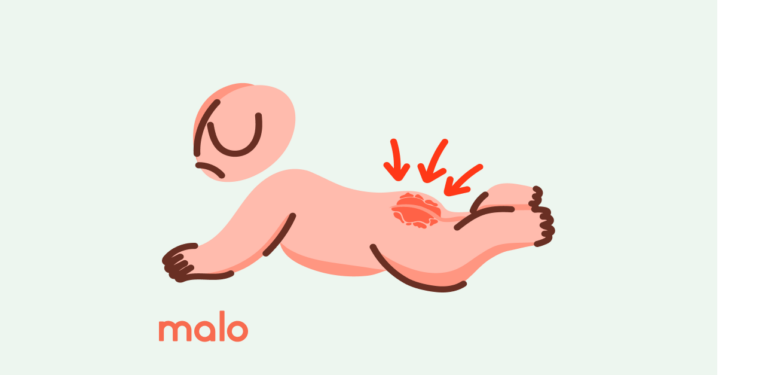Struggling to watch your little one sniffle and squirm with a blocked nose? You’re not alone in wondering how something so tiny as nasal mucus can cause restless nights, interrupted feeding, and anxious, sleepless hours for parents. Baby nasal suctioning lands right at the heart of this everyday parenting challenge—a blend of medical necessity, gentle care, and just a dash of hesitation. Why does mucus build up so quickly? When should you intervene? Which method is actually safest for your child? Tiny nostrils, yet big impact. If the words “congestion,” “nasal aspirator,” or “saline solution” have left you hoping for clarity and practical solutions—rest assured, the answers are close at hand. Ready for a journey that demystifies the when, why, and how of keeping your baby’s nose clear and their breathing smooth? Let’s untangle your questions, blending real-time advice with medically-grounded tips, and ensure that every breath your child takes is as effortless as possible.
Why Nasal Suctioning Matters: Breathing Easy and Easing Worries
What Exactly Is Baby Nasal Suctioning?
At its core, baby nasal suctioning means removing excess mucus—those sticky secretions that easily clog up an infant’s narrow nasal passages. For newborns and young babies, who cannot blow their own nose and tend to breathe almost entirely through their nose, even mild congestion creates hurdles: labored breathing, disrupted feeds, and broken sleep. Can a few millilitres of mucus develop into a bigger problem? In a tiny nose, absolutely. Parents often notice noisy breathing, interrupted sleep, or a baby who simply can’t latch onto the feeding bottle—sometimes due to a simple obstruction in the nostril. Mucus, unremarkable but relentless, needs a little external help until your child is old enough for a handkerchief.
Why Do Babies Need Help with Mucus?
Why do adults just sniff, but babies need our intervention? Unlike older kids, infants are physiologically obligate nasal breathers for their first few months—meaning their mouth-breathing reflex is still developing. A small accumulation of mucus isn’t just uncomfortable, it also interrupts the vital inflow of oxygen, turning ordinary symptoms into real daily struggles. Until your baby can master the gentle art of nose-blowing, baby nasal suctioning becomes more than just a comfort measure—it is an essential health gesture.
Common Culprits: Why Is My Baby Congested?
The drama often begins innocently—a standard cold, exposure to the respiratory syncytial virus (RSV), influenza, or seasonal allergies. Sometimes, environmental irritants like dust or cigarette smoke aggravate things further, causing mucus production to spike. And because those nasal passages are so petite, even minimal swelling or secretions can block airflow. If left unchecked, retained mucus can set the stage for secondary infections: blocked Eustachian tubes leading to ear pain, or more rarely, lower respiratory infections.
When to Reach for the Aspirator: Timing and Frequency
How do you know the right moment? Look for signals: laboured or noisy breathing, visible mucus at the nostril opening, trouble during feeding, or frequent interrupted sleep. Many parents find baby nasal suctioning most effective just before meals (to support strong sucking and swallowing) or before bedtime (for undisturbed sleep). But moderation is key—limit suctioning sessions to no more than two to four times daily, or even less if using only saline. Excessive suctioning? That leads to irritation, bleeding, and more discomfort than relief.
The Tools of the Trade: Understanding Nasal Suctioning Devices
Saline Solution—The Marvel of Gentle Cleansing
Before reaching for a device, pause for saline. Sterile saline solution—an isotonic water-salt mixture— gently loosens mucus, hydrates the sensitive nasal lining, and prepares everything for smoother suction. Available in single-use pods (ideal for hygiene), saline is foundational, regardless of baby’s age. For infants under four months, drops suffice. From six months onward, age-specific sea water sprays come into play.
Cleanliness: The Silent Guardian
Washing your hands: sounds basic, yet it’s the no-nonsense first step for safe baby nasal suctioning. Every tool must be freshly cleaned, dried, and stored between uses. Skipping this? Risk introducing bacteria, prolonging or worsening symptoms, and creating a cycle of infection and anxiety.
Exploring Device Options
- Bulb Syringe: A classic. Squeeze out the air, gently position just inside (never deep into) the nostril, and release. Slow and steady, it creates a mini vacuum for mucus. Benefits—affordable, simple, always available. Drawbacks—sometimes limited suction, tricky to clean, and overzealous use can result in tissue irritation.
- Oral Suction Aspirators (Mouth-to-Nose): Think of options like “NoseFrida:” a flexible tube, a filter, caregiver-guided suction. Parents have real-time control over suction strength, making the process less traumatic. Filters guarantee hygiene, preventing any transfer of mucus or pathogens. Best cleaned with warm soapy water, always dried thoroughly, and disposed of if single-use parts are included.
- Electric Nasal Aspirators: The high-tech touch. Multiple silicone tips, adjustable power settings, some with distracting light or sound features for squirmy babies. Provides consistent, gentle suction—especially effective for thicker secretions. Post-use cleaning is non-negotiable—every detachable component needs proper washing and full air-dry.
- Hospital Suction Catheters: Reserved for the professional domain. Used during severe congestion or hospitalization, these catheters permit deep and controlled suction. Never for unsupervised home use—except under explicit medical guidance.
Step-by-Step Nasal Suctioning: How to Combine Comfort, Precision, and Safety
Preparing the Scene
Calm is your first tool. Begin by swaddling, soft talking, or using soothing music. Lay out materials: saline, clean suction devices, tissues. For infants under six months, saline drops are usually preferred. Gently rotate the head to the side for better access—never force entry (literal or emotional).
Techniques: One Device at a Time
- Bulb Syringe: Compress, insert tip just inside the nostril, release slowly. Empty onto tissue, repeat as necessary. Clean meticulously.
- Oral Aspirator: With a new filter in place, rest the soft tip at the nostril’s entrance and apply only gentle suction—avoid deep insertion.
- Electric Aspirator: Attach silicone tip (fit matters for comfort), begin at the lowest setting, gently position at the nostril, and activate. Always follow manufacturer instructions, especially concerning cleaning and disinfection.
- Saline Alone: Not every case needs suctioning. For routine maintenance or mild congestion, a few saline drops or a brief spray do wonders.
Baby Positioning and Emotional Reassurance
Back-lying is preferred, with head gently to one side for saline instillation. If your baby resists—pause. Sometimes, waiting a few minutes and returning with added comfort makes all the difference. Swaddling, a comforting hand, or even another caregiver’s presence can ease the process.
Aftercare: Breaths of Relief and Clean-Up
Observe your child immediately after suctioning—relaxed breathing and greater comfort should follow swiftly. Warm water and mild soap are the gold standard for cleaning every device part; air dry meticulously to prevent mold or bacterial growth. Repeat suctioning only as indicated by symptoms, always erring on the side of moderation.
Beyond Suction: Tips for Ongoing Comfort and Relief
Sometimes, less is more. Saline drops or sprays may be enough for very mild congestion—no suction required. Using a cool-mist humidifier? That’s perfect for maintaining optimal humidity, thinning secretions, and reducing mucosal irritation (always sanitize regularly to avert the growth of mold or bacteria). Hydration—through breast milk or formula—remains pivotal, helping to keep mucous secretions loose and manageable. For children a little older, gradual guidance on gentle nose-blowing paves the way for independence.
Elevating the head of the crib (never placing pillows or loose objects inside) can also ease nocturnal breathing—just a slight incline suffices. Yet, always under supervision, to prioritise your child’s safety.
Medical Insight: Benefits of Baby Nasal Suctioning for Your Family
- Breathing, Feeding, Sleeping—The Trio of Well-being: Effective baby nasal suctioning restores nasal patency (openness), translating into smoother feeds, fewer sleep disruptions, and noticeably less crankiness.
- Infection Prevention: Draining mucus pre-empts stagnant ‘pools’ in nasal passages—otherwise the perfect environment for bacteria and viruses to flourish, raising the risk of secondary complications like otitis media (middle ear infection) or bronchitis.
- Confidence at Home: Mastering this skill reduces unnecessary worry, and adds a layer of calm for caregivers managing mild respiratory troubles at any hour.
Parental Guidance: Handling Discomfort and Encouraging Best Practices
Did your baby cry, pull away, or protest? Expect a bit of fussing—brief distress is a perfectly natural reaction. With repetition and a gentle approach, most babies adapt quickly, especially when routines remain predictable and calm.
Avoid common pitfalls:
- Never insert tips too far or forcefully.
- Use solutions with only saline—vasoconstrictors or medicated drops require strict doctor prescription.
- Over-suctioning causes redness or even bleeding; stick to recommendations.
And—always consult your paediatrician if you notice persistent breathing difficulty, unusual paleness, recurring nosebleeds, or suspected infection. Your instincts as a parent matter.
Key Takeaways
- Baby nasal suctioning ensures your child receives every breath, every feed, and every nap with maximum comfort—especially before meals or sleep.
- Choose and adapt methods and equipment as your baby grows, and always use saline as a gentle first step.
- Do not exceed two to four suctioning sessions in 24 hours, centering efforts around recognized symptoms.
- Scrupulous hygiene for both tools and hands is non-negotiable.
- Typical fussiness or mild crying passes quickly; calm, gentle handling works wonders.
- Medical input is invaluable when uncertainty or new symptoms arise.
- Parenting, especially in moments of congestion and restlessness, is made lighter by well-informed, timely actions.
For a blend of personalised guidance, expert tips, and reliable health checklists, explore the Heloa app—your digital parent partner for all things baby health.
Questions Parents Ask
What if my baby gets very upset during nasal suctioning?
Short bouts of fussiness or crying are common during baby nasal suctioning. Keeping a soothing voice, singing, or simply pausing for comfort can help. If distress escalates, wait a few minutes and try again. Sometimes, switching caregivers or using a different device makes the process smoother. Gentle, brief, and predictable care usually makes subsequent attempts easier for everyone.
Is it safe to perform nasal suction multiple times a day?
Safety lies in moderation. Repeated suction, especially more than four times daily, can irritate the nasal lining and worsen discomfort. Ideally, restrict baby nasal suctioning to symptom-driven moments such as before feeding or sleep, never out of routine. If congestion persists despite best efforts, seek a paediatrician’s input.
Can both nose and mouth be suctioned if my baby is very congested?
Yes—if significant mucus is present in both airways, start with the mouth (especially immediately after birth) to reduce risk of mucus being aspirated into the airway. Use infant-specific suction devices, work gently, and proceed stepwise. For persistent or unclear symptoms, direct advice from a healthcare provider is the best course.
Which device is the safest and most effective for baby nasal suctioning?
Each device—bulb syringe, oral suction aspirator, electric aspirator—offers unique advantages. Bulb syringes are simple and cheap, but require careful cleaning. Oral aspirators grant precise control, while electric versions save effort and are more effective for thick secretions. Preference often depends on your comfort and baby’s tolerance.
Can saline solution alone clear mild congestion?
Certainly. For occasional, thin mucus, saline alone loosens secretions and may enable your baby to clear the nose through sneezing or normal movement—no device required. Remember, excessive intervention is rarely necessary.
How can I keep the nasal suctioning procedure hygienic?
Always start by washing hands well. After baby nasal suctioning, disassemble and clean all parts of the device with warm soapy water, rinse thoroughly, and air dry. Use distilled or sterile water for making saline, and never share devices between children.
What precautions should I take to avoid hurting my baby?
Always use age-appropriate, soft-tipped devices. Never insert more than just the tip inside the nostril, and avoid using force or prolonged suction. Watch for signs of irritation—redness, swelling, bleeding—and stop immediately if these occur. When unsure, a brief phone call to your doctor can clarify safe technique.
When should I consult the doctor about nasal congestion?
If congestion causes breathing difficulty, persistent pallor, lethargy, poor feeding, or if you notice blood, pus, or obvious infection in the nose—don’t delay professional evaluation. For routine congestion and baby nasal suctioning concerns, regular healthcare visits suffice.









